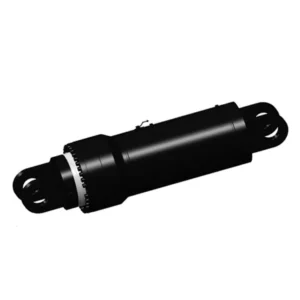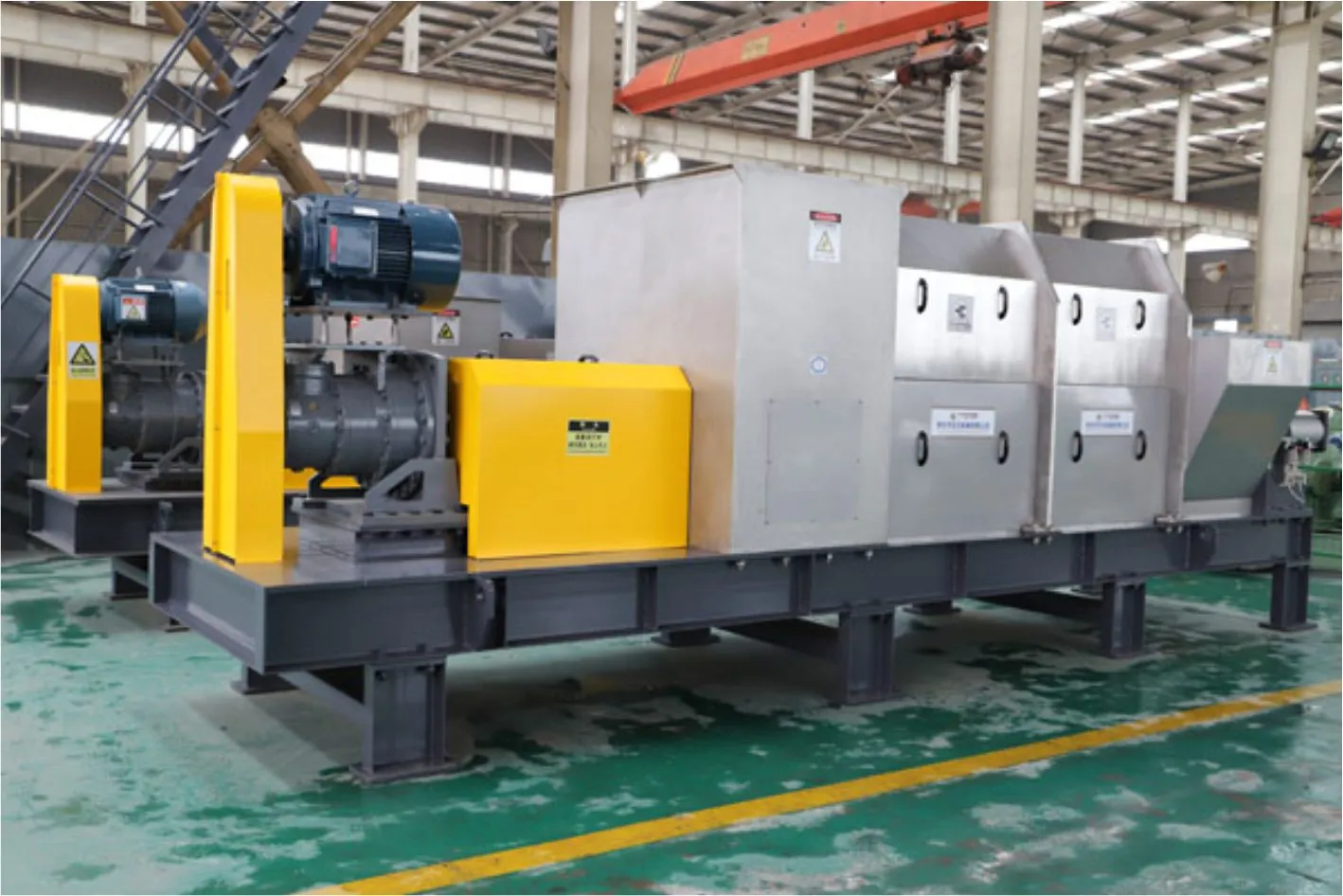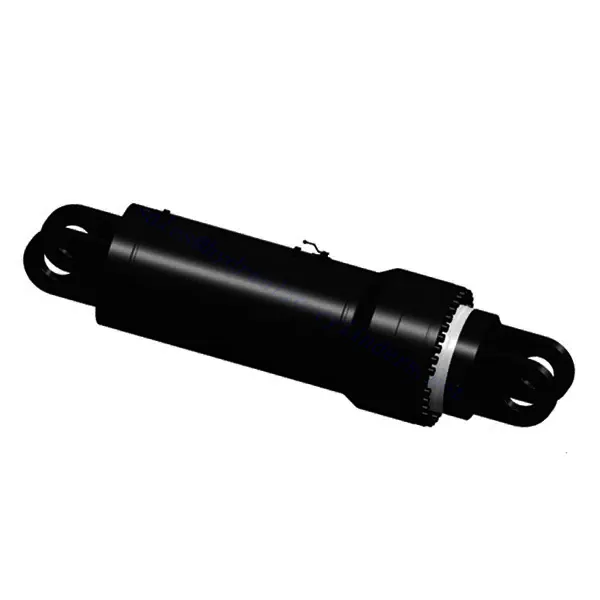Electric Furnace Lifting Cylinder
Kaip vienas iš hidraulinių cilindrų gamintojų, tiekėjų ir mechaninių produktų eksportuotojų, mes siūlome hidraulinius cilindrus ir daugelį kitų produktų.
Susisiekite su mumis dėl išsamesnės informacijos.
Paštas:sales@hydraulic-cylinders.net
Hidraulinių cilindrų gamintojas, tiekėjas ir eksportuotojas.
Electric Furnace Lifting Cylinder

The electric furnace lifting cylinder is a state-of-the-art product designed to enhance efficiency and productivity in industrial furnace operations. This cutting-edge cylinder provides a reliable and powerful mechanism for lifting and positioning furnace components, optimizing material handling processes, and improving overall workflow.
The electric furnace lifting cylinder revolutionizes industrial furnace operations by providing precise positioning control and high lifting capacity. With its robust construction, advanced control system, electric actuation, and precise positioning capabilities, this cylinder streamlines material handling, optimizes workflow, and enhances productivity. By following the recommended usage methods and maintenance practices, you can ensure the optimal operation and longevity of the electric furnace lifting cylinder, contributing to seamless and efficient furnace operations in your industrial setting.
Electric Furnace Lifting Cylinder Key Characteristics:
- Robust Construction:
- The electric furnace lifting cylinder is built with high-quality materials, ensuring exceptional durability and longevity.
- Its robust construction allows it to withstand heavy loads and harsh industrial environments without compromising performance.
- High Lifting Capacity:
- This cylinder boasts a high lifting capacity, making it suitable for handling heavy furnace components with ease.
- Its impressive lifting power enables efficient material handling and positioning, optimizing workflow and reducing manual labor requirements.
- Precise Positioning:
- The electric furnace lifting cylinder offers precise and accurate positioning control for enhanced operational efficiency.
- Its advanced control system allows operators to lift and position furnace components precisely, minimizing errors and optimizing workflow.
- Electric Actuation:
- This cylinder operates through an electric actuation system, eliminating the need for manual lifting or cumbersome hydraulic systems.
- The electric actuation provides convenience, speed, and precise control, streamlining furnace operations and reducing downtime.
Electric Furnace Lifting Cylinder Parameter:
| Product Name | Electric Furnace Lifting Cylinder |
| Bore diameter: | 100mm |
| Rod diameter: | 70mm |
| Pressure: | 14MPa |
| Thrust force: | Maximum 53KN |
| Electric Furnace Lifting Cylinder Applications: | Electric Furnace |
Electric Furnace Cylinder Factory:

Usage Method Of Electric Furnace Lifting Cylinder:
- Installation:
- Begin by securely and properly mounting the Electric Furnace Lifting Cylinder onto the furnace structure.
- Follow the manufacturer’s guidelines and specifications for correct positioning and attachment.
- Ensure that all connections, such as electrical wiring, are properly secured and free from loose connections.
- Electrical Connection:
- Connect the electric furnace lifting cylinder to the power supply, following the manufacturer’s instructions and electrical codes.
- Verify that all electrical connections are secure and insulated to prevent potential hazards or malfunctions.
- Lifting and Positioning:
- Activate the electric furnace lifting cylinder using the control panel or switch designated for lifting operations.
- The cylinder will lift and position furnace components smoothly and precisely, ensuring optimal alignment and material handling.
- Monitor the lifting and positioning process closely and make any necessary adjustments to achieve the desired height or position.
- Integration with Control Systems:
- The electric furnace lifting cylinder can seamlessly integrate into existing furnace control systems.
- Consult a qualified technician or refer to the manufacturer’s guidelines to ensure proper integration and compatibility with your specific furnace setup.
How A Hydraulic Cylinder Works?
A hydraulic cylinder is a mechanical device that converts hydraulic energy into linear force and motion. It operates based on the principles of fluid dynamics and Pascal’s law. Here’s a simplified explanation of how a hydraulic cylinder works:
- Basic Components:
- Cylinder Barrel: A cylindrical tube that houses the piston and fluid.
- Piston: A solid, cylindrical component that divides the cylinder barrel into two chambers.
- Piston Rod: A rod attached to the piston that extends outside the cylinder barrel.
- Seals: Specialized components that prevent fluid leakage between the piston and cylinder barrel.
- Hydraulic Fluid:
- Hydraulic cylinders utilize a specialized fluid, typically hydraulic oil or fluid, which is stored in a reservoir.
- The fluid is pumped from the reservoir into the cylinder through hydraulic hoses or pipes.
- Two Chambers:
- The cylinder barrel is divided into two chambers by the piston: the rod side (or head end) and the cap side (or blind end).
- When pressure is applied to one side of the piston, it causes movement in the opposite direction.
- Extension Stroke:
- In the extension stroke, hydraulic fluid is pumped into the rod side of the cylinder.
- The pressure of the fluid pushes against the piston, causing it to move outward, extending the piston rod.
- As the piston extends, the volume of the cap side chamber increases, and the fluid from that chamber returns to the reservoir.
- Retraction Stroke:
- In the retraction stroke, hydraulic fluid is pumped into the cap side of the cylinder.
- The pressure of the fluid pushes against the piston, causing it to move inward, retracting the piston rod.
- As the piston retracts, the volume of the rod side chamber increases, and the fluid from that chamber returns to the reservoir.
- Control Valves:
- Hydraulic cylinders are controlled by valves that regulate the flow of hydraulic fluid into and out of the cylinder.
- Directional control valves determine the direction of movement (extension or retraction) of the piston.
- Flow control valves regulate the speed of movement by adjusting the flow rate of hydraulic fluid.
- Force and Work:
- The force generated by a hydraulic cylinder is directly proportional to the pressure of the hydraulic fluid and the effective area of the piston.
- By increasing the pressure or the effective piston area, greater force can be generated.
- This force can be utilized to perform work, such as lifting heavy loads, pushing or pulling objects, or actuating mechanical components.
- Sealing System:
- Seals are incorporated into the hydraulic cylinder to prevent leakage of hydraulic fluid between the piston and cylinder barrel.
- These seals ensure that the pressure generated by the hydraulic fluid is maintained and that the cylinder operates efficiently.
- Maintenance:
- Proper maintenance of hydraulic cylinders is crucial for optimal performance and longevity.
- Regular inspection of seals, checking for fluid leaks, and maintaining the appropriate hydraulic fluid level and cleanliness are important maintenance practices.
Capability & Capacity Of Factory:
(1) Assembly
We have a first-class independent research and development assembly platform. The hydraulic cylinder production workshop has four semi-automatic lifting cylinder assembly lines and one automatic tilt cylinder assembly line, with a designed annual production capacity of 1 million pieces. The special cylinder workshop is equipped with various specifications of a semi-automatic cleaning assembly system with a designed annual production capacity of 200,000 and equipped with famous CNC machining equipment, a machining center, a high-precision cylinder processing special equipment, a robot welding machine, an automatic cleaning machine, automatic cylinder assembly machine, and automatic painting production line. Existing critical equipment of more than 300 sets (sets). The optimal allocation and efficient use of equipment resources ensure the accuracy requirements of products and meet the high-quality needs of products.


(2) Machining
The machining shop is equipped with a customized inclined rail turning center, machining center, high-speed honing machine, welding robot, and other related equipment, which can handle the processing of cylinder tubes with a maximum inner diameter of 400mm and a maximum length of 6 meters.

(3) Welding

(4) Painting & coating
With small and medium-sized cylinder automatic water-based paint coating lines, to achieve automatic robot loading and unloading and automatic spraying, the design capacity of 4000 pieces per shift;
We also have a semi-automatic paint production line for large cylinders powered by a power chain, with 60 cases per shift design capacity.


(5) Testing
We have first-class inspection facilities and test beds to ensure that the performance of the cylinder meets the requirements.

We are one of the best hydraulic cylinder manufacturers. We can offer comprehensive hydraulic cylinders. We also provide corresponding agricultural gearboxes. We have exported our products to clients worldwide and earned a good reputation because of our superior product quality and after-sales service. We welcome customers at home and abroad to contact us to negotiate business, exchange information, and cooperate with us!
Take a Tour of Our VR Factory:
Take a tour of our VR factory with the following
How Does Forklift Hydraulic Cylinder Work?
Hydraulic Cylinder Application:


